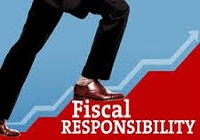For any nation to progress and flourish it must have some economic framework that makes the smooth functioning of the country’s economy. Now when we talk about economic planning the main emphasis of the governments is to make full utilization of the countries resources. Full utilization is made by drawing up economic plans that guide us to it. Now according to HD Dickinson economic planning was “the making of major economic decisions -what and how much is to be produced and whom it to be allocated by the conscious decision of determined authority, on the basis of comprehensive survey of the economic system as a whole”.
Ever since India gained independence on 15th August, 1947, the founders of our constitution believed in the concept of planning. They introduced the Five-Year Plans concept of development and put it under the authority of the Planning Commission of India. The prime minister serves as the ex-officio chairman and the deputy chairman is appointed through a system of nomination and also from the same rank of the cabinet minister. Currently the twelfth Five Year Plan is underway and which came into motion of the completion of eleventh plan in March 2012.
The first Five Year Plan was commissioned on 1951 and ran till 1956, it was completely based on Harrod-Domar model and focused on balanced development of the economy with main emphasis on agriculture. The plan was a complete success as the national income rose by 18 percent and per capita income by 11%. The Second Five Year Plan also called P.C. Mahalanobis plan was from 1956 to 1961 and focused on industrialization and managed to have a growth rate of 4.1 percent.
When the third Five Year Plan came into motion and many things changed. A Sino-Indian war took place in 1962 and the weakness in the Five Year plan was shown, the government’s focus had changed and Defense Sector came into the limelight. After having fought a war with Pakistan between 1965 to 1966 India had took a major hit in the economy and soon after that was a severe drought in 1965 that further exacerbated the situation. Finally inflation hit India which was due the effects of war and drought the focus of the planning commission was to control the prices. The government had targeted growth rate of 5.6 percent but due to huge failure of this plan, the growth rate was around 2.4 percent only.
The government had to finally announce a Plan Holiday action plan which was a contingency plan that ran from 1966–67, 1967–68, and 1968–69. These three annual plans came under the Plan Holiday scheme and were the curtesy of the failure of the third Five Year Plan. Drought again was the main cause of concern in 1966 to 1967 but now whatever is the department equal opportunities were given, be it agricultural, its allied industries or the industrial sectors. Plan Holidays main reason was later deducted as war, inflation and the severe drought.
The plan holiday scheme were executed between the years 1996-69 and was with a budget of around 1600 crores, being an equal opportunity plan not only agriculture and development of community was emphasized but also on industries that produced chemical fertilizers, high quality seeds and irrigation facilities were improved. All these factors were the major cause for Green Revolution that later occurred in the country. The external factors were also responsible for the success of the Plan Holiday schemes like the monsoon favored agriculture among the last two years and so no drought like condition occurred. The annual growth rate touched 6.9 percent per annum and production of food grains reached 95 million tons in the year 1967-68.
Before the fourth Five Year Plan, the resources were distributed according to a set pattern and an objective mechanism. Gadgil Formula was finally adopted in 1969, since then Gadgil formula is revised with new set of variables that have helped with the term plans ever since. To sum up we can say that Plan Holiday was an emergency plan so as to mitigate the worsening situation of the economy and it was able to check inflation and food production thus making our economy stabilized.
Click here for government certification in Accounting, Banking & Finance





8 Comments. Leave new
nice article
Well written
Great work!
nice one…
good work… well done…
Great!
Simple and nice article
A great and astonishing Article